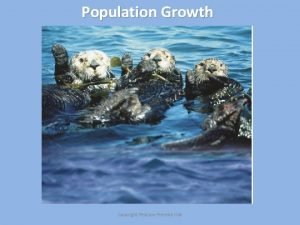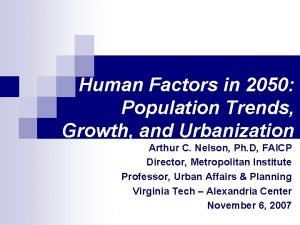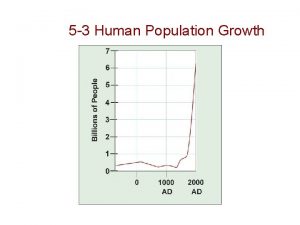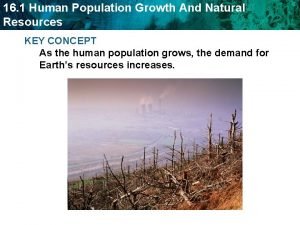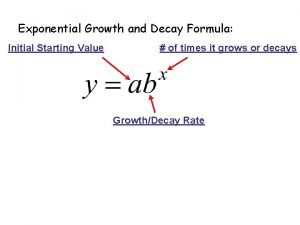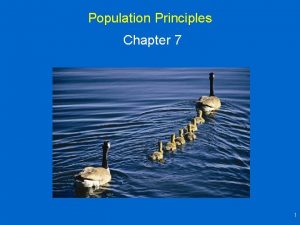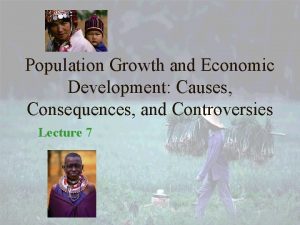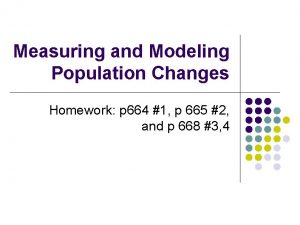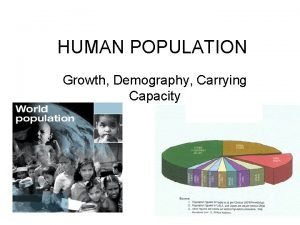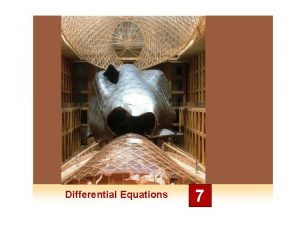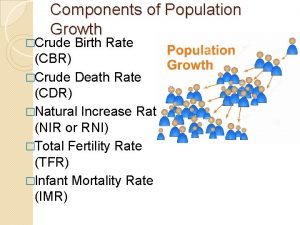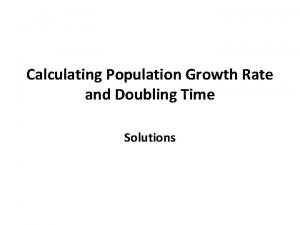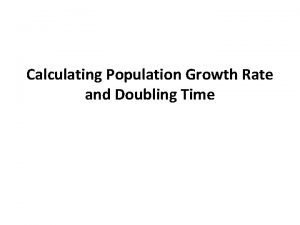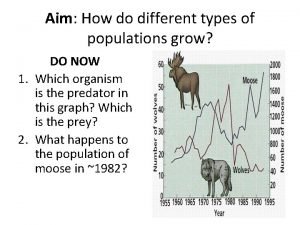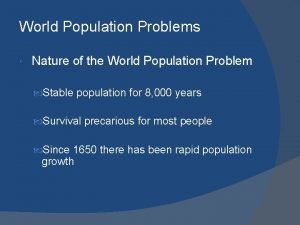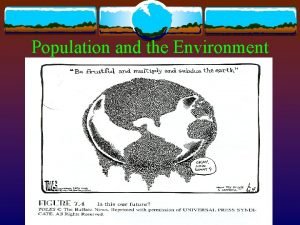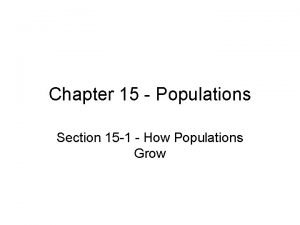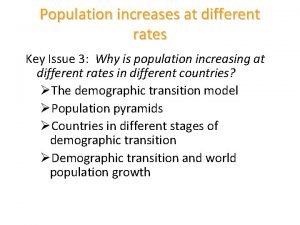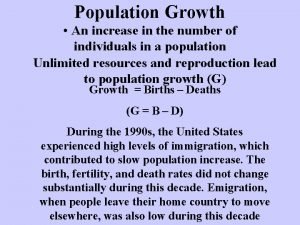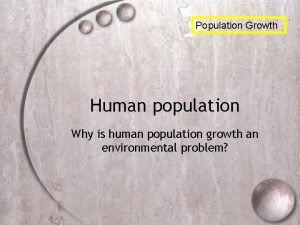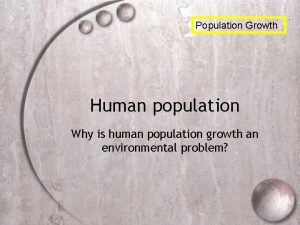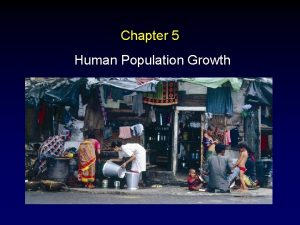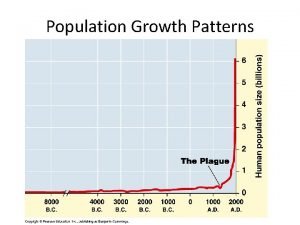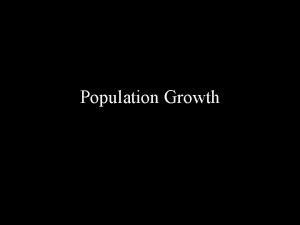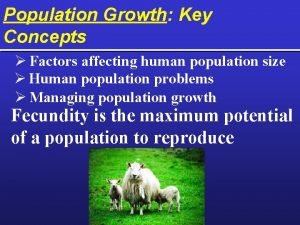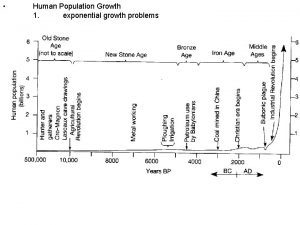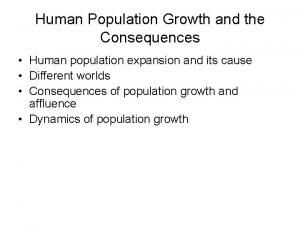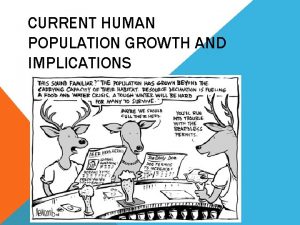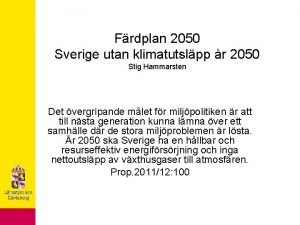Human Factors in 2050 Population Trends Growth and














































- Slides: 46

Human Factors in 2050: Population Trends, Growth, and Urbanization Arthur C. Nelson, Ph. D, FAICP Director, Metropolitan Institute Professor, Urban Affairs & Planning Virginia Tech – Alexandria Center November 6, 2007

America Grows 200 million in 1968 300 million in 2006 400 million in 2036 460 million in 2050 615 million in 2080 750 million in 2100 America adds 100 million people faster than any other nation except India and Pakistan Source: Analysis by Arthur C. Nelson.

Getting Ahead of the Curve – US US Population Housing Units Jobs 2000 281 million 116 million 166 million 2050 460 million 200 million 300 million* *Includes full- and part-time jobs as defined by Bureau of Economic Analysis. Source: Arthur C. Nelson, Metropolitan Institute at Virginia Tech.

Front Page December 4, 2004


Residential Development US Growth-Related Units Replaced Units Total Units Built Average Annual = Percent of 2000 Units 2000 to 2050 84 million 40 million* 104 million 2 million 90% *Loss rate =~ 6% per decade compounded based on loss-rate analysis of units enumerated in 1990 and 2000 censes. Source: Arthur C. Nelson, Metropolitan Institute at Virginia Tech.

Second-Home Market Overrated? n n 4% of HH have 2 nd homes; 70% between 35 -64 Derived second home demand, new homes: ¨ During 1990 s = 900 k ¨ During 2000 s = 600 k ¨ During 2010 s = 300 k ¨ During 2020 s = 200 k ¨ During 2030 s = 100 k n Second home demand driven in part by low interest rates and low energy prices not sustainable Source: Estimates based on Second Homes: What, How Many, Who and Where? Harvard Joint Center for Housing (2001). Analysis by Arthur C. Nelson, Metropolitan Institute at Virginia Tech.

Nonresidential Development US Nonresidential space 2000 Growth-Related Square Feet Replaced Square Feet Total Square Feet Built Percent of Space in 2000 to 2050 80 billion 60 billion 120 billion* 180 billion 225% *Loss rate =~ 20% per decade compounded. (Source: Arthur C. Nelson, Metropolitan Institute at Virginia Tech. )



Life-Span of Building Space

What About …. ? n Telecommuting? ¨ Phenomenal disappointment About 3 -4% telecommute full time – every Census n Does not reduce congestion but may add to it n Does not reduce pollution but may add to it n n Internet retailing? ¨ Retail space demand growing Internet sales replacing catalog sales n Shopping is the ultimate human function: n Tactile ¨ Olfactory ¨ Social ¨

Internet Retail Sales Growth Rate and Share, 1998 -2006

Retail Center Space Growth Year 1986 1990 1995 2000 2005 GLA/Cap 14. 7 17. 6 18. 9 20. 3 20. 5 Source: National Research Bureau Shopping Center Database, Co. Star Subsidiary. Dollars nominal.

Reality Check Space Class 1992 Total Glamour Space 145 Warehouse & Storage 45 All Other 75 2003 %Dif 149 +3% 35 -23% 63 -16% Non-percentage figures per capita based on Census estimates. Source: Energy Information Administration, Commercial Buildings Energy Consumption Surveys for 1992 and 2003.

Bottom Line New Construction 2000 -2050 Construction Residential Nonresidential Infrastructure Total $30 Trillion $20 Trillion $10 Trillion $60 Trillion

How Does It Grow?

21 st Century Megapolitan Form

Polk County Commuter Shed Dots indicate where residents of Polk worked in 2003 Source: Metropolitan Institute at Virginia Tech, based on Longitudinal Employer-Household Dynamics, US Census Bureau.

MEGAPOLITAN AMERICA

Demographic Drivers

Market Analysts Finding Changing Preferences RCLCO (formerly Robert Charles Lesser Co. ) National Association of Realtors National Association of Home Builders Nationally Recognized Market Analysts Urban Land Institute Lend Lease/Price. Waterhouse. Coopers Joint Center for Housing Policy at Harvard Golfing Buddies and Taxi Drivers

What is the Market Telling Us? Resale prices of condominiums rival resale prices of single-family homes for first time ever Appreciation of condominiums is higher than single-family homes nationally and in every region

Emerging Resale Price Evidence Trends 2 nd. Q’ 06 to 2 nd. Q’ 07 Region US NE MW S W SF% CC% 0. 2% 2. 0% 1. 3% 5. 1% -1. 6% 3. 7% 0. 9% -2. 5% -0. 4% 0. 3% SF $ $270 k $306 k $203 k $231 k $378 k CC $ $259 k $283 k $226 k $221 k $303 k Source: Adapted from National Association of Realtors, August 2007.

“Traditional” Households on the Wane Household Type HH with Children Single-Person HH 1960 2000 2040 48% 13% 33% 26% 27% 30%

Share of Growth 2000 -2040 HH Type W/ children W/o children Single-person 2000 2040 Change 35 41 6 71 111 40 26 44 17 %Share 13% 87% 38% Figures in millions of households. Source: Adapted and extrapolated from Martha Farnsworth Riche, How Changes in the Nation's Age and Household Structure Will Reshape Housing Demand in the 21 st Century, HUD (2003).

People Turning 65 Each Year . Source: US Census Bureau – 65+ in the United States: 2005; Wan He, Manisha Sengupta, Victoria A. Velkoff, & Kimberly A De. Barros. December 2005

What Futurists Tell Us Bio-medical advances will extend lifetimes. Insurance actuarial tables extend to 120. Another 20 years added – minimum. Adulthood now 75%+ non child-rearing. Gen-X & Gen-Y making “family” location decisions differently from prior generations.

Smart-Growth Preferences Source: National Association of Realtors & Smart Growth America, 2004.

Unmet Walkable Demand Residential Form % want drivable suburbs % of those who have % want walkable suburbs % of those who have Boston 30% 85% 40% 70% Source: Jonathan Levine, Zoned Out, Resources for the Future, 2006. Atlanta 41% 95% 29% 35%

Demographic Shift + Preference Shift = Higher Demand for Density 140% SOURCE: RCLCO Consumer Research

Reshaping the Future

Housing Unit Preference by Type, Surveys Unit Type Attached Share 38% Apartments Condos, Coops Townhouses 14% 9%* 15% Detached 62% Small Lot (<7, 000 sf) Large Lot (>7, 000 sf) 37% 25% Source: Low range of surveys reviewed by Arthur C. Nelson, “Planning for a New Era, ” Journal of the American Planning Association, Fall 2006. *Toll Brothers shifting product mix to 15% condominium; WSJ 12/06.

Looming Large-Lot Oversupply, 2005 -2030 Unit Type Attached Small Lot Large Lot Supply Preference Mid-Point 2005 Change 39 M 15 M 13 M 12 M 40 M 22 M 58 M - 23 M - 3 M Figures in millions of units. Preference change based on low-range of preference survey averages. Mid-point is mid-percentage distribution between 2005 and low-range estimate of preference surveys and supply of occupied units in 2005.

Wasteful Residential Energy Lost as Percent of Energy Used Source: Energy Information Administration 2006.

The Opportunity The New Promise Land


Tear Up a Parking Lot Rebuild Paradise Large, flat and well drained. Major infrastructure in place 4+ lane access, 1+ sides, transit-ready Single ownership – Kelo problems reduced. Already removed from low-density subdivision use. FARs at 0. 15 to 0. 25 May more easy to make NIMBYs into YIMBYs. Slide title phrase adapted from Joni Mitchell, Big Yellow Taxi, refrain: “Pave over paradise, put up a parking lot. ”

Re-Building Capacity Calculation Ripe Acres Percent Assumed Redeveloped Acres 30 dwellings @ 1, 500 sq. ft. 30 jobs @ 500 sq. ft. Percent Residential Demand Percent Employment Demand Result 2. 8 M 25% 0. 7 M 1. 4 FAR +/ 50%+/-

Trend-Watching Shifting pressures away from V-Zones?

Development “Tide” Changing? n Wall Street Journal asks, "Is Florida Over? “ (9/29/07) Coastal congestion n Higher taxes/fees for storm-related infrastructure n Multiple increases in insurance premiums n Increased storms and intensity n Floridians by thousands now moving to other SE states – and even Arizona n Florida as metaphor for V-Zones? n

Source: Wall Street Journal, 9/29/07

Net Moving Van Destinations Source: Wall Street Journal, 9/29/07

Other Evidence? California growth stagnating. n California emigration to NV, AZ, UT, CO, OR, SD(? !). n Growing public awareness of global warming and sea-level rise. n Real estate values in coastal MD & VA communities plummeting faster than national averages. n Is there a “sea change” occurring? n

Need to be ahead of curve

Thank you!
 Afghanistan dtm stage
Afghanistan dtm stage Copyright
Copyright Population growth factors
Population growth factors Factors of 2050
Factors of 2050 Population growth concept map answers
Population growth concept map answers Section 5-3 human population growth
Section 5-3 human population growth Natural resources and population growth
Natural resources and population growth Population growth and decay
Population growth and decay Economic growth trends
Economic growth trends Journey 2050 student handout 2 word search
Journey 2050 student handout 2 word search Student handout 3 crossword puzzle journey 2050
Student handout 3 crossword puzzle journey 2050 Growth is defined as an increase in
Growth is defined as an increase in Pith
Pith Primary growth and secondary growth in plants
Primary growth and secondary growth in plants Vascular ray
Vascular ray Chapter 4 population ecology section 1 population dynamics
Chapter 4 population ecology section 1 population dynamics Section 1 population dynamics
Section 1 population dynamics Population ecology section 1 population dynamics
Population ecology section 1 population dynamics Population ecology chapter 4 answers
Population ecology chapter 4 answers Rule of 70
Rule of 70 What are the two types of population growth
What are the two types of population growth Modeling population growth rabbits answer key
Modeling population growth rabbits answer key Population growth curve
Population growth curve Geometric exponential growth
Geometric exponential growth Why population growth is good
Why population growth is good What is population ecology
What is population ecology Exponential growth formula ecology
Exponential growth formula ecology Milton keynes population
Milton keynes population Types of population growth
Types of population growth Rule of 70 in population growth
Rule of 70 in population growth Rule of 70 in population growth
Rule of 70 in population growth Logistic differential equation
Logistic differential equation Total fertility rate
Total fertility rate Components of population growth
Components of population growth K selection r selection
K selection r selection Doubling time calculator
Doubling time calculator How to find doubling time
How to find doubling time Density-dependent limiting factors definition apes
Density-dependent limiting factors definition apes Rule of 70 in population growth
Rule of 70 in population growth What are the two types of population growth
What are the two types of population growth Importance of population growth
Importance of population growth Conclusion of population growth
Conclusion of population growth Arithmetically vs geometrically growth
Arithmetically vs geometrically growth Yeast population growth lab
Yeast population growth lab Exponential growth curve of a hypothetical population
Exponential growth curve of a hypothetical population Key issue 3 why does population growth vary among regions
Key issue 3 why does population growth vary among regions Population growth means
Population growth means

